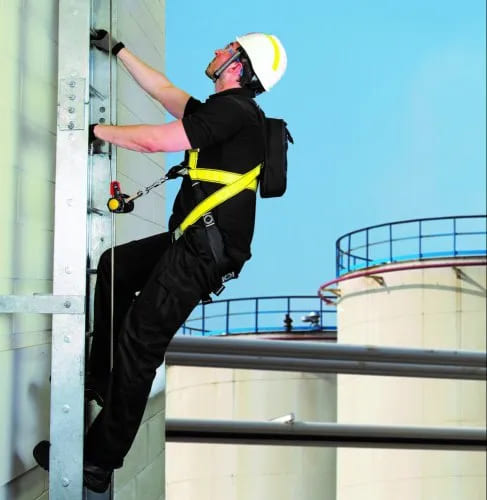In today's industrial landscape, ensuring the safety of workers is paramount, especially when tasks involve working at considerable heights. This is where fall arresters come into play. These ingenious devices serve as a crucial lifeline, offering protection against the perils of falls. Let's delve into why fall arresters are indispensable in height-related work environments:
1. Prevention of Fatalities: Fall arresters act as a safety net, literally and figuratively. They are designed to halt a worker's descent in case of a fall, thereby preventing potentially fatal accidents. By swiftly stopping a fall, they mitigate the risk of severe injuries or even death.
2. Compliance with Regulations: In many jurisdictions, using fall arresters is not just a recommendation but a legal requirement. Occupational safety regulations mandate the implementation of adequate fall protection measures in workplaces where employees are exposed to elevated risks. Employers must ensure compliance to avoid penalties and, more importantly, to safeguard their workers' well-being.
3. Versatility in Applications: Fall arresters are adaptable to various work scenarios. Whether it's construction sites, industrial facilities, or telecommunications towers, these devices offer a
versatile solution for safeguarding workers at heights. Their flexibility makes them indispensable across a wide range of industries.
4. Peace of Mind for Workers: Knowing that they have reliable fall arresters in place provides peace of mind to workers performing tasks at elevated locations. This assurance enhances their focus on the job at hand, contributing to increased productivity and morale. When employees feel safe, they're better equipped to perform their duties efficiently.
5. Technological Advancements: The evolution of fall arresters has seen significant technological advancements over the years. Modern devices are engineered with cutting-edge materials and innovative features to enhance performance and user comfort. From self-retracting lifelines to energy-absorbing mechanisms, these advancements further improve safety standards.
6. Training and Awareness: Effectively utilizing fall arresters requires proper training and awareness among workers. Employers must provide comprehensive training programs to educate employees on the correct usage, inspection, and maintenance of these devices. Additionally, fostering a culture of safety awareness promotes proactive measures to prevent accidents.
7. Risk Reduction Strategies: Incorporating fall arresters into comprehensive risk reduction strategies is essential for ensuring workplace safety. Employers should conduct thorough risk assessments to identify potential hazards related to working at heights. Implementing appropriate control measures, including the use of fall arresters, mitigates these risks effectively.
8. Emergency Preparedness: Despite preventive measures, accidents can still occur. Hence, it's crucial to have robust emergency preparedness protocols in place. This includes establishing rescue procedures tailored to the specific work environment and providing appropriate rescue equipment. Fall arresters complement these protocols by minimizing the impact of falls.
9. Cost-Effectiveness: Investing in fall arresters is not just a matter of compliance; it's also a prudent financial decision. While the initial investment may seem significant, the long-term benefits outweigh the costs. By averting costly legal liabilities, medical expenses, and downtime resulting from accidents, fall arresters ultimately prove to be cost-effective.
10. Continuous Improvement: As with any safety equipment, continuous improvement is vital for optimizing efficacy. Regular reviews of fall protection systems, including fall arresters, help identify areas for enhancement. Whether it's upgrading to newer models or refining safety protocols, a commitment to ongoing improvement is integral to maintaining workplace safety standards.
In conclusion, fall arresters play a pivotal role in safeguarding workers from the inherent risks associated with working at heights. Beyond mere compliance, they represent a commitment to prioritizing human lives and well-being in the workplace. Employers must recognize the significance of these devices and ensure their proper implementation, supported by comprehensive training and proactive safety measures. By doing so, they not only fulfill their legal obligations but also foster a culture of safety that permeates throughout the organization. After all, when it comes to protecting lives, there's no room for compromise.






Comments